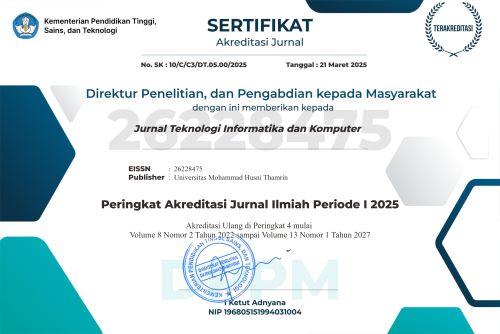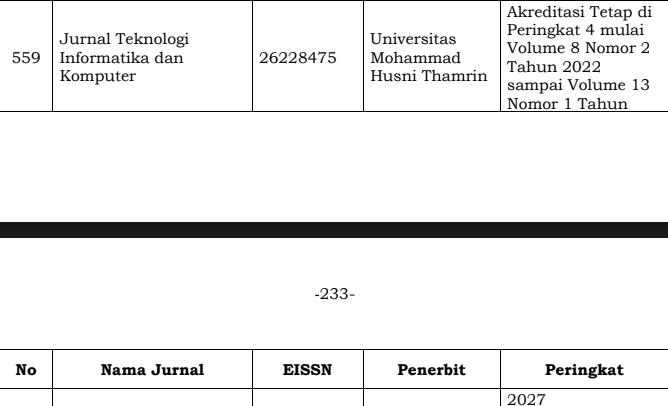Komparasi Algoritma Klasifikasi Dengan Menggunakan Anaconda untuk Memprediksi Ramai Penonton Film di Bioskop
DOI:
https://doi.org/10.37012/jtik.v5i1.220Abstract
In the interest of Moviegoers with trendy films,
cinemas also play a major role in attracting audiences to
watch films they like. But changes that are quite dynamic
from audience interest take turns, sometimes it is
sometimes not crowded. Thus sometimes the cinema
manager experiences an error in placing the film to be
aired, so the number of viewers in the cinema is not as
expected. From this problem, researchers are interested in
analyzing data relating to film audiences in the cinema.
By using CART classification, NBC (Naive Bayes
Classifier) algorithm, SVM (Support Vector Machine), LR
(Logis Text Regression) and LDA (Linear Discriminant
Analysis) which will be compared which accuracy is the
best for predicting the absence or absence of the
audience. Researchers use Anaconda to compare six
algorithms and will see the highest results from the
Confusion Matrix and ROC Curve
References
Mujain, Saiful, (2015). “Memahami Pola Menonton
Kelas Menengah Muda Urbanâ€, SMRC, Jakarta.
Persson, (2015). Karl,PREDICTING MOVIE RATINGS A
comparative study on random forests and support
vector machines.“Sweden : University Of Skovde.
Kinnear, Thomas C. and James R. Taylor,
(1995).Marketing Research: An Applied Approach.
“McGraw Hill Textâ€.
Han, Jiawei dan Kamber, Micheline, (2006 ). Data Mining
: Concept and Techniques Second Edition, Morgan
Kaufmann Publishers.
Patil, S Sherekar, (April 2013)Performance Analysis Of
Naive Bayes and J48 Classification Algorithm for
Data Classification, “International Journal of
Computer Scienceâ€, Vol. 6, No 2.
Larose, D. T, (2005).Discovering Knowledge In Data An
Introduction to Data Mining. A John Wiley & Sons,
Inc., Publication, (2005).
Gorunescu, F., (2011).Data Mining Concepts, Models and
Techniques. Springer, 1st Edition.
Vercellis, C, (2009).Business intelligence: Data Mining
and Optimization for Decision Making, “John Wiley &
Sons Ltdâ€, Southern Gate, Chichester, West Sussex.
Wu, X., Kumar, V., Quinlan, J.R., Ghosh, J., Yang, Q.,
Motoda, H., McLachlan, G.J., Ng, A., Liu, B., Yu,
P.S., Zhou, Z.H., Steinbach, M., Hand, D.J. &
Steinberg, D,Top 10 Algorithms in Data Mining.
Survey Paper. “DOI 10.1007/s10115-007-0114-2â€,
Springer-Verlag, London, (2007).
Demsar, Jane, Statistical comparisons of classifier over
multiple datasets.â€Journal of Machine learning.
Brook , John.SUS - A quick and dirty usability scale.
“Redhatch Consulting Ltdâ€., United King-dom, 1980
Downloads
Published
Issue
Section
Citation Check
License
Jurnal Teknologi Informatika dan Komputer allows readers to read, download, copy, distribute, print, search, or link to the full texts of its articles and allow readers to use them for any other lawful purpose. The journal allows the author(s) to hold the copyright without restrictions. Finally, the journal allows the author(s) to retain publishing rights without restrictions Authors are allowed to archive their submitted article in an open access repository Authors are allowed to archive the final published article in an open access repository with an acknowledgment of its initial publication in this journal.

Jurnal Teknlogi Informatika dan Komputer is licensed under a Creative Commons Attribution 4.0 International License.












